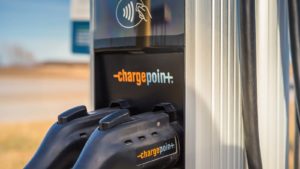Don’t Crash! 3 EV Stocks to Ditch Now
Electric vehicle stocks haven’t faired as well to the start of 2024 leading to EV stocks to sell. Slowing sales, high valuations and rising net losses have made some EV stocks vulnerable to crashes.
Some investors may interpret a 70% decline as a good buying opportunity. However, not every stock is a buy-the-dip opportunity just because it has experienced a sharp correction or crash. Holding onto these EV stocks can negatively affect your portfolio in the long run.
Plug Power (PLUG)

A business is not sustainable if it continues to lose money without any meaningful signs of profitability. Plug Power (NASDAQ:PLUG) is one of the many stocks that fit the criteria. The company has burned through more cash year-over-year in several consecutive quarters. That includes a $283 million net loss in the third quarter of 2023.
Some investors have waited patiently for a rebound and used revenue growth as a justification. However, growth in the quarter decelerated significantly and was only 5% year-over-year. That’s not the type of growth investors want to see from a corporation burning a lot of cash.
Competing hydrogen firms are creating shortages and higher prices for resources. Those headwinds hurt Plug Power at a time when the company cannot afford to have headwinds. Shares have collapsed by 74% over the past year and will likely go lower. The company currently has a $2.5 billion market cap.
Ford (F)

Ford (NYSE:F) hasn’t been the best stock for long-term investors. The stock is down by 3% over the past year and is up by 44% over the past five years. Investors could have done better with an index fund, but Ford faces a few challenges that can lead to further downside.
The first major issue is rising costs due to the United Auto Workers Union negotiating higher worker wages. Ford often targets cheap labor and takes a stingy approach to its workers, but the elevated costs as a part of the new arrangement can reduce the company’s profit margins.
Ford recently announced a new supplemental dividend on top of its regular dividend. While the frequency of supplemental payments remains to be seen, it isn’t as good as it sounds. My concern is that the company will have limited capital to deploy back into the business due to more dividend payments and higher costs from the UAW.
Supply shortages and average car ages rising sharply should also concern investors. Higher car ages mean more people are putting off buying a new car. Although Ford is profitable, it still burns money with its EV vehicles. Ford is shifting its efforts to gas-electric hybrids instead of pure electric vehicles.
ChargePoint (CHPT)

ChargePoint (NYSE:CHPT) followed the all-to-familiar script of becoming public via a SPAC, generating a lot of hype and then crashing. The stock more than quadrupled to reach its zenith but collapsed by over 95%.
Shares are down by 82% over the past year but are going through a rally ensured to result in many bag holders. ChargePoint is up by 25% over the past month despite posting year-over-year revenue and net income declines in the third quarter of 2023.
Revenue dropped by 12% year-over-year during the quarter, while net income fell by 87% year-over-year. The company generated $110 million in revenue and registered a $158 million net loss. Neither of those numbers is impressive for a company with a $950 million valuation.
A slowdown in EV activity will further hinder ChargePoint when it’s burning through capital and resources. Investors can benefit from putting their money into another stock.
On the date of publication, Marc Guberti did not have (either directly or indirectly) any positions in the securities mentioned in this article. The opinions expressed in this article are those of the writer, subject to the InvestorPlace.com Publishing Guidelines.

